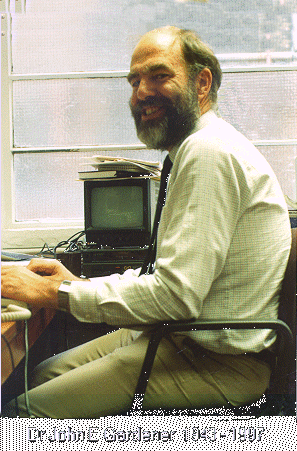

During childhood, surrounded by machinery on his father's farm in Australia, John developed a life long interest in all things mechanical and scientific. He began his study of physics in the mid-1960's and obtained his PhD from the University of New South Wales in 1973. Following a period of travel, John settled in the UK and joined the UCLH medical physics deparment in 1976. It was here that he developed his skills in the practical and theoretical aspects of computing and image processing.
For the past twenty years John was involved in the clinical application of a wide variety of imaging techniques. His recent work focused on the development of three dimensional imaging. He developed methods for the acquisition, reconstruction and display of ultrasound images in 3D and he showed that the fetal heart can be recorded dynamically, allowing images of the chambers to be recorded at different phases.
John's other projects included the development of a stereotactic guidance system for biopsies and laser treatment, in conjunction with 3D US and 3D CT, and segmentation and volume measurements from 3D ultrasound and from 3D CT and MRI. John's work often necessitated the collection of many kinds of data and he became known for his practical skills in designing and building complicated pieces of equipment, including computer interfaces, for this purpose. John's ability to turn his hand to any task, both theoretical and practical, was extensive and recognised by everyone who came into contact with him. He will be especially remembered for his willingness to share his skills and knowledge with anybody in need of them, often sacrificing his own work and time in the process. John's talents were derived from his ability to intuitively tackle problems on a conceptual level, enabling him to find novel solutions to all kinds of problems including those outside his field of practical expertise.
John also directed a funded project for developing a method for teaching prostate surgery (TURP) using 3D imaging and simulation techniques. John took great pleasure from the fact that all his work was of immediate clinical value. Before his death John had succeeded in obtaining a grant from a prestigious funding body which would have enabled him to continue his research into the next millennium.
Outside the laboratory John was equally busy. He played many musical instruments and he enjoyed singing, a love shared with his wife Suzanne. As a loving father John shared his passion for the sciences and the arts with his three children: James, David and Catherine. He also enjoyed tennis and swimming. During his more relaxed moments John was a keen philosopher. His philosophical inquiry, although never complete, was extensive, and nothing gave him more pleasure than to discuss his ideas with his colleagues.
Without a doubt John was viewed
by all as a kind, gentle, and generous man, His passing is deeply felt
by all those who had the privilege to know him.